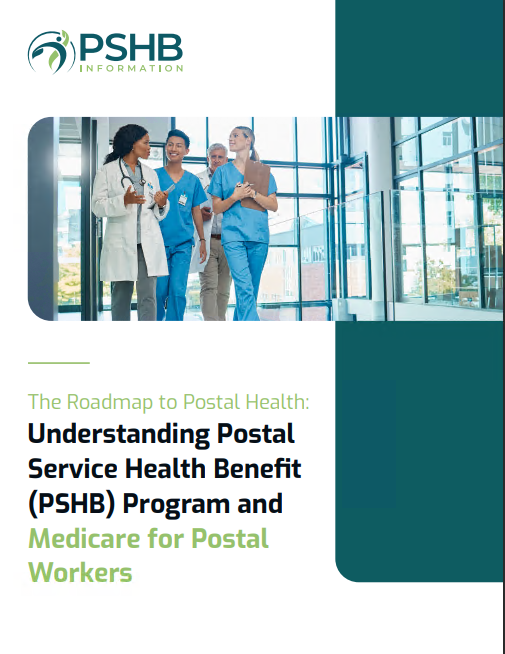Key Takeaways:
-
Medicare and PSHB plans in 2025 provide USPS retirees with a blend of comprehensive health coverage and cost-sharing benefits tailored to their needs.
-
Enrolling in Medicare Part B and selecting the right PSHB plan is essential to maximizing benefits and minimizing out-of-pocket costs.
Understanding PSHB and Medicare in 2025
As a USPS retiree, navigating your health coverage in 2025 involves balancing the benefits of the new Postal Service Health Benefits (PSHB) program with Medicare. These two systems are now closely integrated, offering tailored options that meet the unique needs of postal workers and their families. This year marks the first time USPS retirees fully transition to the PSHB program, making it crucial to understand how it works alongside Medicare.
What’s New for USPS Retirees in 2025?
The PSHB program replaces the Federal Employees Health Benefits (FEHB) system for USPS employees and retirees. While similar in structure to FEHB, PSHB is specifically designed for postal workers, providing enhanced integration with Medicare for eligible retirees and their families. Key features include:
-
Mandatory Enrollment in Medicare Part B: If you’re a Medicare-eligible retiree, enrollment in Part B is a requirement to maintain PSHB coverage, with certain exemptions.
-
Comprehensive Prescription Drug Coverage: PSHB plans automatically include Medicare Part D coverage through an Employer Group Waiver Plan (EGWP).
-
Tailored Cost-Sharing Options: Many PSHB plans coordinate benefits with Medicare, offering features like premium reimbursements and reduced deductibles.
Enrollment Requirements and Deadlines
Staying compliant with enrollment requirements is critical. For 2025:
-
Medicare Enrollment: If you’re 65 or older, you need to enroll in Medicare Part B unless you fall under specific exemptions, such as retiring on or before January 1, 2025.
-
PSHB Enrollment: Changes to your health plan must be made during Open Season (November 11 to December 13, 2024) or within 60 days of a qualifying life event.
Failing to meet these requirements could result in loss of coverage or higher out-of-pocket costs. Moreover, understanding timelines is essential to avoid gaps in coverage.
How Medicare Part A and Part B Fit In
Medicare Part A covers inpatient hospital services, while Part B provides outpatient care. Together, they form the foundation of your health coverage as a retiree. Here’s how they integrate with PSHB:
-
Cost Savings: Medicare acts as the primary payer, reducing costs for services covered under both Medicare and PSHB.
-
Comprehensive Coverage: PSHB supplements Medicare by covering services not fully paid for by Parts A and B.
For instance, your PSHB plan may waive deductibles or copayments for services that Medicare covers. This synergy ensures you receive the most comprehensive and cost-effective care possible.
Prescription Drug Coverage with PSHB
One standout feature of PSHB plans is their inclusion of Medicare Part D coverage through an EGWP. This setup simplifies prescription drug management and helps reduce costs. Key benefits include:
-
Out-of-Pocket Cap: Medicare Part D now includes a $2,000 annual cap on drug costs, ensuring predictable expenses. This cap eliminates the notorious “donut hole,” offering significant financial relief for retirees managing multiple medications.
-
Monthly Payment Options: Beneficiaries can spread prescription costs over the year through the Medicare Prescription Payment Plan, a feature designed to ease financial strain.
Understanding how these features work together empowers you to make informed decisions about your medication needs while minimizing expenses.
Selecting the Right PSHB Plan
Choosing the right PSHB plan involves evaluating your health needs, preferences, and financial situation. Consider these factors:
-
Plan Benefits: Compare coverage options, including vision, dental, and hearing services. Some plans may offer enhanced benefits that complement Medicare.
-
Cost Sharing: Look at premiums, deductibles, and copayments, keeping in mind how your PSHB plan coordinates with Medicare.
-
Provider Networks: Ensure your preferred healthcare providers and pharmacies are included in the plan’s network. Checking provider compatibility can save you from unexpected costs.
Taking the time to review these aspects ensures that your chosen plan aligns with your current and future healthcare needs.
Financial Considerations for 2025
Understanding the financial implications of Medicare and PSHB integration is crucial. Here’s a breakdown of key costs:
-
Medicare Part A: Premiums range from $0 to $518 per month, depending on your work history. The hospital deductible is $1,676 per benefit period, along with daily coinsurance fees for extended stays.
-
Medicare Part B: The standard premium is $185 per month, with a $257 annual deductible. These amounts are critical to budget for, especially if you’re on a fixed income.
-
PSHB Premiums: Vary by plan but often include cost-sharing benefits for Medicare enrollees. Selecting a plan that offers premium reimbursements can alleviate some financial burdens.
-
Part D Costs: Include premiums, deductibles, and the $2,000 out-of-pocket cap. This cap is a game-changer for those managing chronic conditions or high-cost medications.
Additionally, the Income-Related Monthly Adjustment Amount (IRMAA) applies to higher-income retirees, making it essential to understand your Modified Adjusted Gross Income (MAGI) and its impact on costs.
Maximizing Your Benefits
To get the most out of your health coverage:
-
Stay Informed: Review your PSHB plan’s benefits and any Annual Notice of Change (ANOC) letters to understand updates. These documents highlight critical changes affecting your coverage.
-
Coordinate Care: Use Medicare as your primary payer and PSHB as your secondary to minimize expenses. Coordination ensures seamless claims processing and reduced out-of-pocket costs.
-
Plan for Prescription Costs: Take advantage of the $2,000 out-of-pocket cap and monthly payment options for high-cost medications. Managing prescription costs strategically can save you thousands annually.
-
Leverage Preventive Services: Both Medicare and PSHB emphasize preventive care, covering services like screenings, immunizations, and wellness visits at little to no cost.
By proactively managing your healthcare, you can avoid unexpected expenses and maintain a high standard of care.
Special Considerations for USPS Retirees
If you retired on or before January 1, 2025, or are covered under a family member’s FEHB plan, you may be exempt from certain requirements, such as mandatory Medicare Part B enrollment. However, opting into Medicare and a PSHB plan can still provide significant benefits, such as enhanced cost-sharing and broader provider networks.
Additionally, understanding how PSHB adapts to life changes—like moving or adding family members to your plan—is crucial. Qualifying Life Events (QLEs) allow you to adjust your coverage outside Open Season, ensuring your plan meets your evolving needs.
Planning for the Future
Health coverage isn’t just about today; it’s about ensuring peace of mind for the future. Regularly reassess your plan choices to align with any changes in your health or financial situation. Utilize resources like plan comparison tools, customer support services, and informational webinars to make informed decisions. Staying proactive helps you avoid pitfalls and maximize your benefits.
Why Medicare and PSHB Integration Matters
Combining Medicare with the PSHB program in 2025 offers USPS retirees a robust healthcare solution. By understanding the integration of these systems and making strategic choices, you can enjoy comprehensive coverage, reduced costs, and peace of mind. The synergy between these programs reflects a commitment to supporting USPS retirees in achieving their health and wellness goals.






